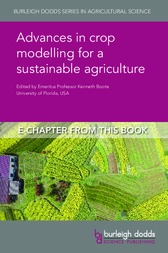Improving crop pest/disease modeling.
Improving crop pest/disease modeling.
Author(s): FERNANDES, J. M. C.; PAVAN, W.; PEQUENO, D.; WIEST, R.; HOLBIG, C. A.; OLIVEIRA, F.; HOOGENBOOM, G.
Summary: One of the biggest accomplishments in human history has been the domestication of plants, providing a more continuous food supply and promoting the conformation of sedentary agricultural groups (Pérez-Jaramillo et al., 2016). However, since the early days of crop domestication, growers have been plagued by multitudes of pests and diseases causing hunger and social upheaval. Zadoks (2017) discussed selected historical pest and disease outbreaks in the Old World in view of their social and political consequences. The challenge persists up to present. It is estimated that crop pests and diseases are responsible for direct yield losses ranging between 20% and 40% of global agricultural productivity and regularly menace global food security (Savary et al., 2019). However, crop losses remain poorly recognized as an important driver in matters of food security, whereas plant diseases have had an enormous impact on livelihoods throughout human history (Zadocks, 2017). Crop pests and diseases impact individual farms, local commerce, national and international trade, and the global economy.
Publication year: 2019
Types of publication: Book sections
Unit: Embrapa Wheat
Observation
Some of Embrapa's publications are published as ePub files. To read them, use or download one of the following free software options to your computer or mobile device. Android: Google Play Books; IOS: iBooks; Windows and Linux: Calibre.
Access other publications
Access the Agricultural Research Database (BDPA) to consult Embrapa's full library collection and records.
Visit Embrapa Bookstore to purchase books and other publications sold by Embrapa.

